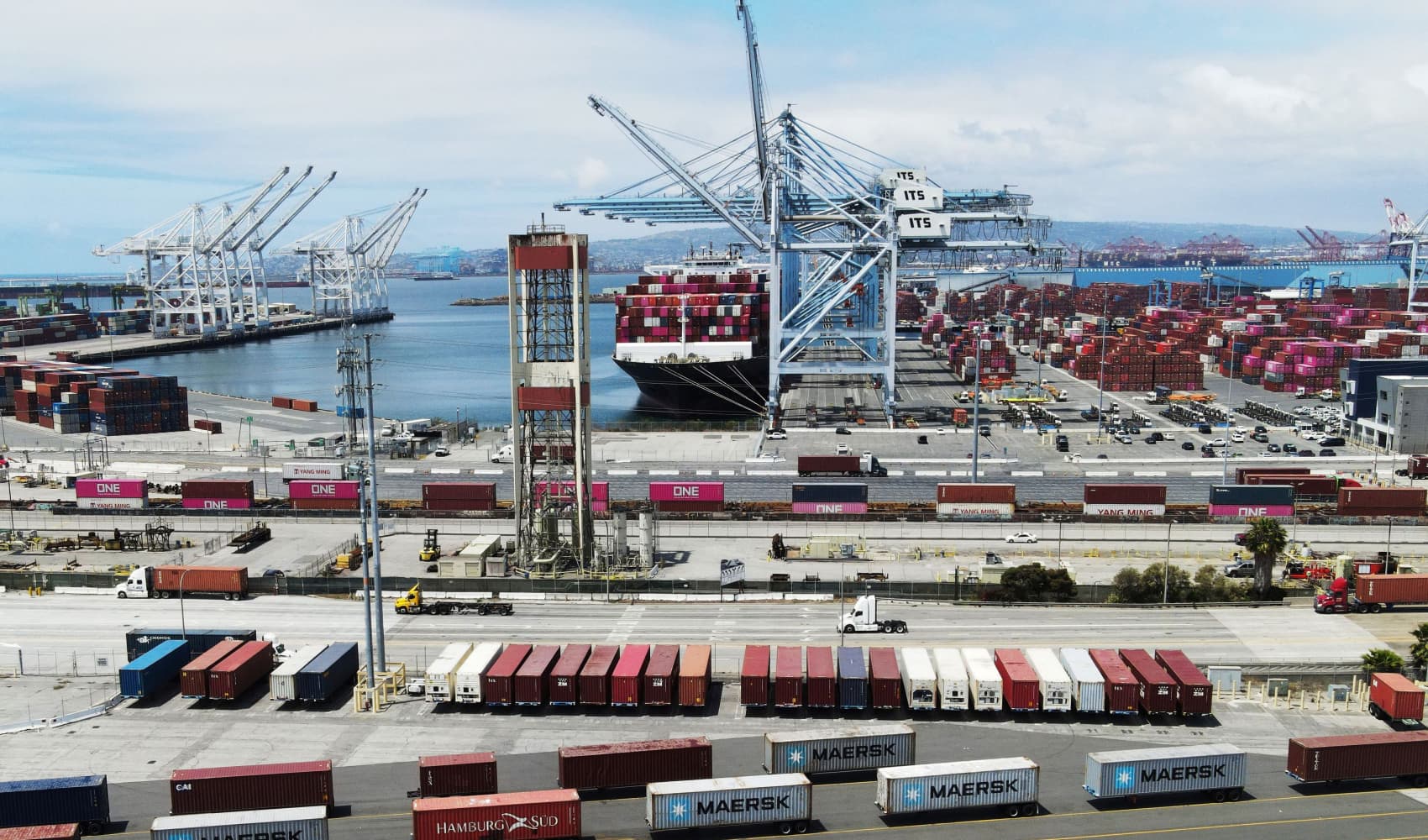Trump Tariffs: Will Holiday Deals on Amazon, July 4th Survive?
Trump Tariffs Threaten Holiday Deals: Will Amazon Prime Day, July 4th, and Thanksgiving Be Affected?
The Looming Holiday Price Hike: Are We Doomed?
Picture this: you're ready to snag that amazing deal on a new TV during Amazon Prime Day, or maybe a shiny new grill for your July 4th BBQ. But what if those deals aren't so amazing after all? What if the price tags are noticeably higher, thanks to something as complex as international trade policy? This is the potential reality facing shoppers this year, as the ongoing trade war with China casts a long shadow over the biggest retail deal days of the year. Manufacturers are sounding the alarm, warning that time is running out to mitigate the impact of Trump's tariffs on China. Without a resolution, we could see significant price hikes and supply shortages impacting everything from Amazon Prime Day to Thanksgiving.
The Clock is Ticking: A 30-Day Window for Relief
So, what's the rush? Well, think of it like this: retail works on a specific calendar. Products need to be ordered, manufactured, shipped, and stocked on shelves well in advance of the holiday rush. China's recent indication of willingness to engage in trade talks offers a glimmer of hope, but small business owners emphasize that the next 30 days are crucial for placing manufacturing orders. If deals aren't made soon, the supply chain will be disrupted, and that will inevitably trickle down to higher prices for consumers.
Supply Chain Woes: Holiday Shipments Plummeting
Just how dire is the situation? According to supply chain data trackers, holiday shipments are already down by over 50%. That's a significant drop, and it suggests that retailers are either hesitant to order as much merchandise, anticipating decreased demand due to higher prices, or are simply struggling to source goods in the face of tariffs. President Trump even suggested that there may be fewer dolls for children this holiday season due to the trade war. While that might seem like a specific example, it highlights the widespread impact that tariffs can have on the availability of goods.
Amazon Prime Day: Will Deals Still Be Steals?
Early Warning Signs for Prime Day Shoppers
Amazon Prime Day, typically held in July, is a major kickoff to the holiday shopping season. But this year, things could be different. Many holiday sales promotions may start to look different as early as July 4th, as small businesses struggle to compete with larger retailers who may be able to absorb some of the tariff costs. Will those "lightning deals" still be as electrifying? Will you really be getting the best price possible? It's worth keeping a close eye on pricing trends and comparing prices across multiple retailers to ensure you're getting a fair deal.
July 4th: BBQ Prices Burning a Hole in Your Wallet?
Grilling Season Under Pressure
July 4th is synonymous with barbecues, cookouts, and celebrating with friends and family. But the tariffs could make your celebration a little more expensive. Think about it: grills, patio furniture, outdoor games, even the food you're grilling – many of these items are imported, and tariffs can drive up their cost. Keep an eye on grocery prices and consider buying items in bulk ahead of time to save money.
Back-to-School Shopping: A Tariff-Fueled Headache?
Higher Prices for Backpacks and Beyond
Back-to-school shopping is already a stressful time for parents. Now, imagine adding higher prices on essential items like backpacks, notebooks, clothing, and electronics. The tariffs could impact the cost of these goods, making it even more challenging for families to afford everything their children need for the school year. Start shopping early and look for deals and discounts to mitigate the impact.
Halloween: Spooky Prices, Not Just Spooky Costumes
Costumes and Candy Costs Could Creep Up
Halloween is all about fun and frights, but this year, the fright might come from the price tags on costumes and candy. Many Halloween costumes and decorations are manufactured in China, making them vulnerable to tariffs. Candy, too, could see price increases as the cost of imported ingredients rises. Consider making your own costumes and decorations to save money and add a personal touch.
Thanksgiving: A More Expensive Feast?
Turkey Day Budgets Under Threat
Thanksgiving is a time for gathering with loved ones and giving thanks. But it's also a time for spending money on food, decorations, and travel. If the tariffs remain in place, the cost of your Thanksgiving feast could be significantly higher. Turkeys, cranberries, stuffing, and even serving dishes could all be impacted. Start planning your Thanksgiving meal early and look for ways to cut costs, such as buying ingredients in bulk or hosting a potluck-style dinner.
Black Friday and Cyber Monday: Will the Deals Be Real?
Discounts Dwindling Due to Tariffs?
Black Friday and Cyber Monday are traditionally the biggest shopping days of the year, with retailers offering deep discounts on a wide range of products. But this year, the tariffs could dampen the enthusiasm of shoppers. Retailers may be forced to offer smaller discounts or raise prices on certain items to offset the cost of the tariffs. Do your research ahead of time and compare prices across multiple retailers to ensure you're getting a genuine deal.
Christmas and Hanukkah: Holiday Cheer, Higher Price Tags?
Gift-Giving Gets More Expensive
Christmas and Hanukkah are the culmination of the holiday shopping season. But if the tariffs remain in place, the cost of gifts could be significantly higher. Toys, electronics, clothing, and many other popular gift items are imported, and tariffs can drive up their cost. Consider giving homemade gifts or experiences to save money and add a personal touch.
Can Markets Outside of China Fill the Gap?
Exploring Alternative Sourcing Options
The good news is that there's still some hope. While holiday shipments from China are down, there's a possibility that markets outside of China can make up some of the difference. Retailers are actively exploring alternative sourcing options in countries like Vietnam, India, and Mexico. If these alternative sources can ramp up production quickly, they may be able to help mitigate the impact of the tariffs. However, it's important to remember that diversifying supply chains takes time and investment.
The Small Business Squeeze: Who Pays the Price?
Navigating the Tariff Minefield
Small businesses are often hit the hardest by tariffs. They lack the resources and bargaining power of larger corporations, making it difficult for them to absorb the increased costs. As small businesses struggle to compete, they may be forced to raise prices or even reduce their product offerings. Support your local small businesses by shopping with them whenever possible and understanding that their prices may be slightly higher due to the tariffs.
The Political Chess Match: What's Next for the Trade War?
Watching Washington for Trade Breakthroughs
The future of the trade war is uncertain. Negotiations between the U.S. and China are ongoing, and the outcome will have a significant impact on the retail landscape. Keep an eye on news reports and political developments to stay informed about the latest developments in the trade war.
Consumer Strategies: How to Beat the Tariff Blues
Smart Shopping Tactics for Tariff Times
Even if the tariffs remain in place, there are still things you can do to save money this holiday season. Shop early, compare prices, look for deals and discounts, consider buying items in bulk, and explore alternative gift-giving options. Don't be afraid to get creative and think outside the box. Remember, the holidays are about more than just buying things; they're about spending time with loved ones and creating memories.
The Long-Term Impact: What Does This Mean for the Future of Retail?
Reshaping the Retail Landscape
The trade war could have a lasting impact on the retail industry. It could lead to a shift in sourcing patterns, as retailers seek to diversify their supply chains and reduce their reliance on China. It could also lead to a rise in prices for consumers, as retailers are forced to pass on the cost of the tariffs. Only time will tell how the trade war will ultimately reshape the retail landscape.
Conclusion: Preparing for a Potentially Pricey Holiday Season
The potential impact of Trump's tariffs on the biggest retail deal days of the year is significant. From Amazon Prime Day to Thanksgiving and beyond, consumers could face higher prices and limited availability of goods. While there's still hope for a resolution in the trade war, it's important to be prepared. By shopping strategically and exploring alternative options, you can still enjoy a festive and affordable holiday season. Remember to stay informed, shop smart, and focus on what truly matters: spending quality time with your loved ones. The next 30 days are critical in determining the fate of holiday shopping this year.
Frequently Asked Questions
Q: Will the tariffs definitely impact prices this holiday season?
A: While not guaranteed, the likelihood is high. Manufacturers are warning of potential price increases if the trade war continues, impacting a wide range of consumer goods.
Q: What specific products will be most affected by the tariffs?
A: Products that are heavily reliant on Chinese manufacturing, such as electronics, toys, clothing, and household goods, are most likely to see price increases.
Q: What can I do to minimize the impact of the tariffs on my holiday spending?
A: Start shopping early, compare prices across multiple retailers, look for deals and discounts, and consider buying items in bulk.
Q: Are there any alternative countries where retailers can source products to avoid the tariffs?
A: Yes, retailers are exploring alternative sourcing options in countries like Vietnam, India, and Mexico.
Q: How can I stay updated on the latest developments in the trade war and its potential impact on retail prices?
A: Stay informed by following reputable news sources and tracking industry reports on trade policy and its effects on consumer goods.

